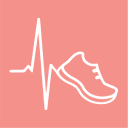Heart rate tracking is much more popular now that technology makes it super easy to monitor 24-7.
Trackers like Withings’ Steel HR, for example, allow you to literally wear your heart on your sleeve: the rate is displayed right on the watch face so you know exactly what your ticker’s up to at any given moment.
RELATED: 5 Tips for Heart Health
Having that information can provide you with plenty of insights into your health, but first, you’ve got to know how to interpret the numbers.
Here are a few surprising facts about heart rate tracking that’ll help you get started, so that you can start to convert all of that data you’re collecting into action.
3 Facts About Heart Rate Tracking
1. Your resting heart rate (RHR) reflects your fitness level (and overtraining).
Wearing a fitness tracker throughout the day when you’re inactive will help you gauge your resting heart rate (RHR). (Bonus: Withings’ Steel HR has the longest battery life of any tracker on the market, so it’ll stick with you all day!) A lower RHR can indicate good overall cardiovascular health. If you’re overweight and/or out of shape, your RHR may be too high and you will want to incorporate more regular exercise to bring it down. On the flipside, if you’re involved in an intense training regimen, your heart rate may stay elevated too high above its normal resting level if you’re pushing like crazy and not allowing for recovery time. So you can use some simple RHR tracking measurements to avoid overtraining (and potential injury).
2. The fat burning zone is probably a myth (or at least isn’t worth stressing over).
In the past, many people used heart rate to calculate what was referred to as their “fat burning zone.” Here’s the thinking: At lower workout intensities, the body burns fat instead of carbs, whereas at higher intensities, it may burn more carbs first. So, to burn more fat, some trainers advised sticking to the lower heart rate zone. However, current thinking and research tends to show that whatever your body is burning for fuel, it’s calorie expenditure that really matters, and working out at 60-75 percent of maximum heart rate will burn less calories than 75-85 percent.
RELATED: Will Exercising on an Empty Stomach Help You Lose Weight?
3. Tracking your heart rate during a workout can help you push harder.
That doesn’t mean low-intensity or high-intensity is better than the other, you should just know that if you’re working out in a lower heart rate zone, using LISS Training, for example, you’ll want to schedule longer workouts. A vigorous HIIT workout at 80 percent maximum heart rate can be shorter and deliver the same results. The key: Use your heart rate tracker to make sure you’re working as hard as you want to be. If it’s LISS, don’t drop into a resting zone. If you’re trying to get in a quick HIIT session, glance down at the Steel HR on your wrist periodically to make sure you’re really pushing to your absolute max in every interval.
In the end, understanding and utilizing the numbers will be one small piece of getting the most out of both your workouts and an overall active lifestyle.
This blog post was created in partnership with Withings. Photo: Withings





























